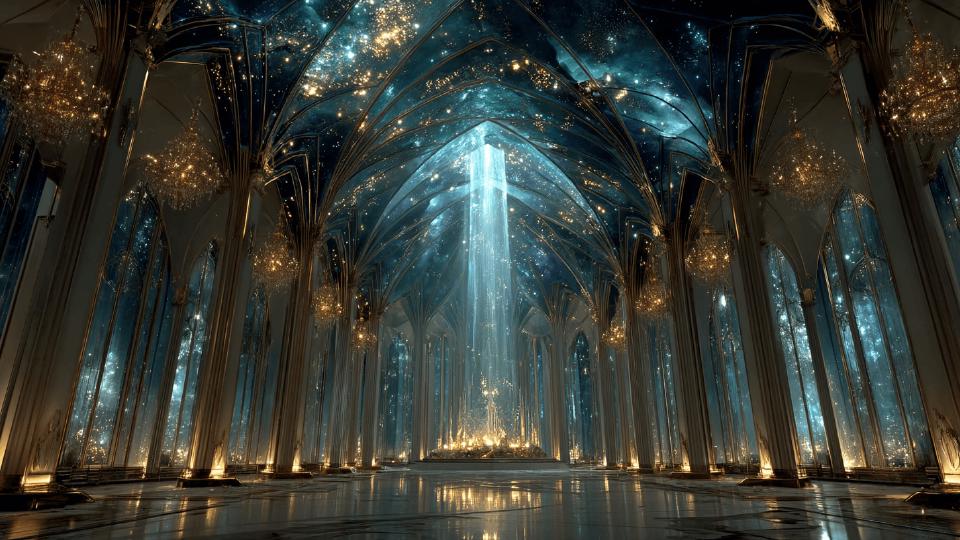
In the esoteric traditions of late antiquity and the Western theurgical lineage, the term cathedral signifies not an external structure but an interior architecture of consciousness. It represents the symbolic body—an inner temple formed by the soul as a vessel for divine indwelling. This temple arises from disciplined integration rather than imagination, and it bears two aspects: a crystalline dome reflecting the clarity of Nous (divine intellect) and a metallic or fiery foundation corresponding to the vital energy of the Daimon, the mediating spirit. The cathedral thus expresses, in inner form, the soul’s participation in both the intelligible and the embodied realms.
The Function of the Inner Temple
The cathedral serves as an axis between worlds, the place where heaven and earth—Nous and Daimon—are brought into harmony. Within this structure, divine intellect descends without overwhelming embodied consciousness, and Daimonic vitality ascends without losing order. This recalls the theurgic concept of the Pantheon, the inner sanctuary where the soul encounters its hierarchy of powers in balanced relation.
It also functions as a ritual container. The consecrated inner space mediates and organizes energetic forces that, if approached without structure, could destabilize the psyche. Within the cathedral, the currents of Nous and Daimon are tempered and arranged in lawful proportion. This containment resembles the alchemical vas hermeticum—the sealed vessel where opposing principles unite and transform. The cathedral, like that vessel, allows the fusion of contraries under the protection of form.
The Cathedral and the Fixed Order
At an advanced stage of inner work, the cathedral houses and sustains the key elements of ordered consciousness. The blue flame at the solar plexus serves as the interior lamp, while Nous, enthroned at the crown, provides the axis of intelligence and direction. This configuration stabilizes the psychic field, diminishing astral turbulence and establishing the fixed order that marks the shift from fluid visionary experience to durable illumination.
The cathedral also acts as a lasting receptacle for this order. Its crystalline nature signifies the clarity and strength of a Daimonic vessel no longer subject to fluctuation. Through it, consciousness gains a steady medium of expression, allowing the energies of Nous to flow into embodied life without distortion.
Scaffolding and Transformation
The inner cathedral functions as scaffolding in the theurgic sense of synthēma—a divine symbol that stabilizes descent. As with all scaffolding, its purpose is provisional. It endures while mediation is required; as realization deepens, the form may become transparent or dissolve entirely. When the conjunction of Nous and Daimon no longer depends on symbolic mediation, the cathedral’s structure internalizes. The body itself becomes the cathedral: the visionary form transposes into the perfected subtle body through which the divine presence acts directly.
The Aim of Embodied Theurgy
The purpose of the cathedral is ordered embodiment. Within it, Nous directs and Daimon executes, not in domination but in cooperative harmony of intellective and vital principles. This balance allows for the emergence of the soma pneumatikon—the spiritual or immortal body that unites clarity and vitality in a single, luminous form. The cathedral thus serves as both process and instrument of this transformation. It begins as symbolic architecture, becomes a living psychic vessel, and culminates in the embodied realization of divine form.
Through this structure, the soul learns to dwell in stability amid the descent of higher light. The cathedral is not an image to be viewed but a function to be fulfilled—the interior architecture of consciousness through which humanity becomes capable of bearing the divine.